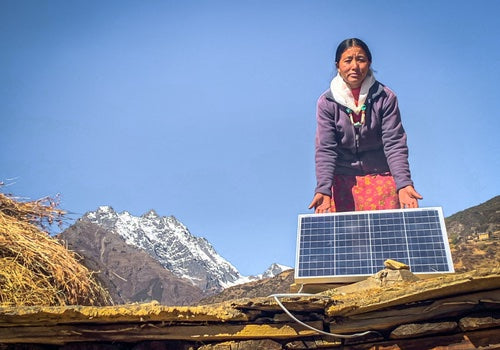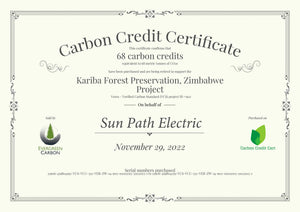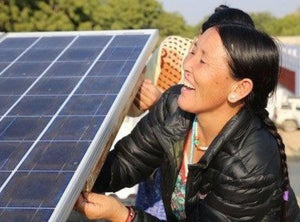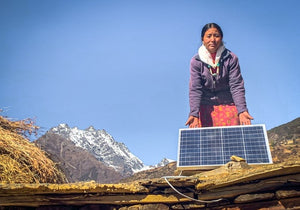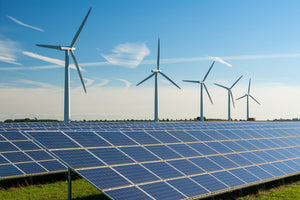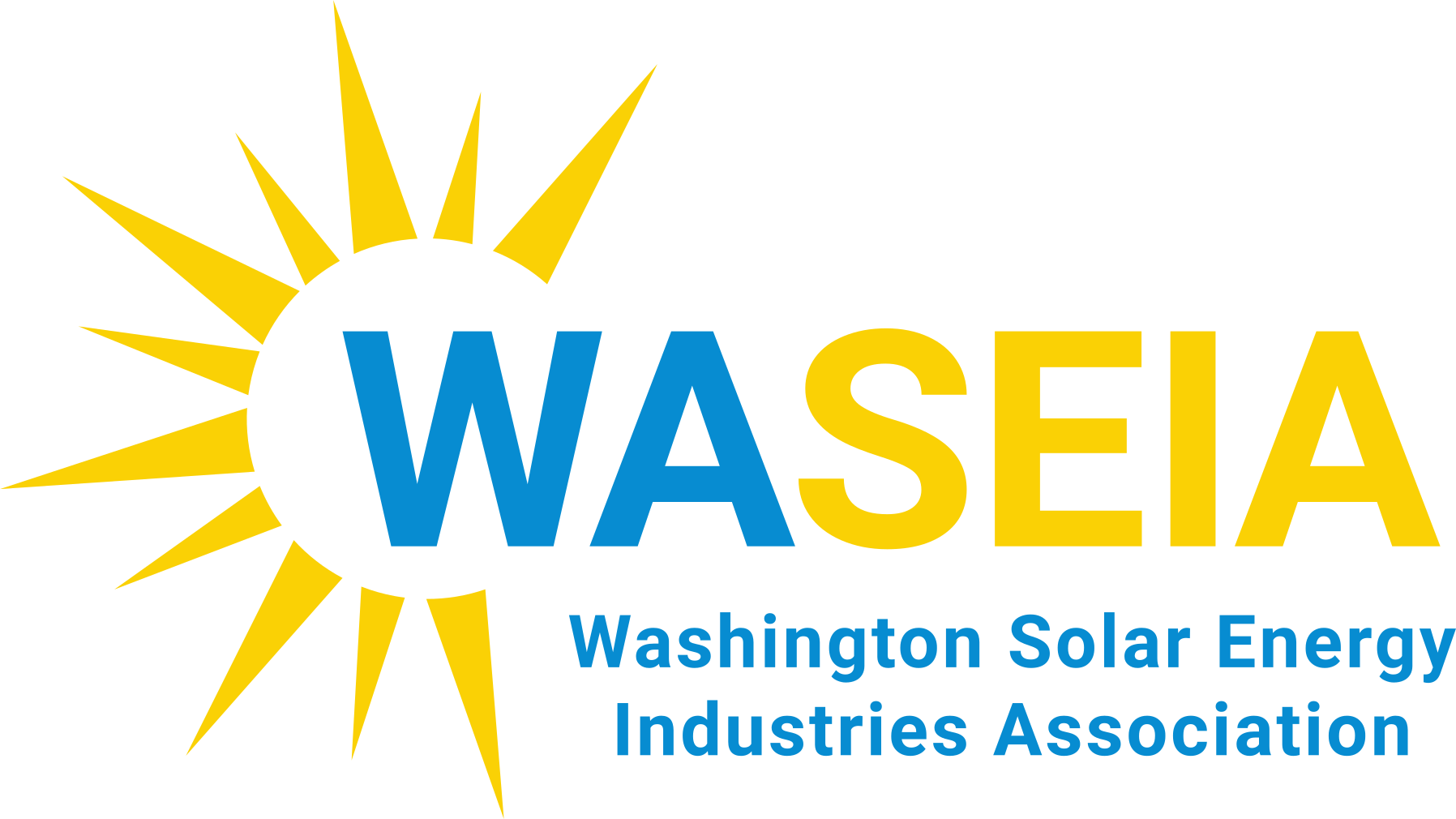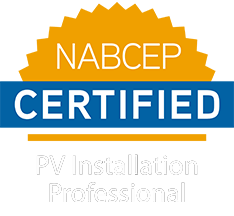
COP27 Reaches Breakthrough Agreement on New “Loss and Damage” Fund for Vulnerable Countries
UN Climate Change News, 20 November 2022 – The United Nations Climate Change Conference COP27 closed today with a breakthrough agreement to provide “loss and damage” funding for vulnerable countries hit hard by climate disasters.
“This outcome moves us forward,” said Simon Stiell, UN Climate Change Executive Secretary. “We have determined a way forward on a decades-long conversation on funding for loss and damage – deliberating over how we address the impacts on communities whose lives and livelihoods have been ruined by the very worst impacts of climate change.”
Set against a difficult geopolitical backdrop, COP27 resulted in countries delivering a package of decisions that reaffirmed their commitment to limit global temperature rise to 1.5 degrees Celsius above pre-industrial levels. The package also strengthened action by countries to cut greenhouse gas emissions and adapt to the inevitable impacts of climate change, as well as boosting the support of finance, technology and capacity building needed by developing countries.
Creating a specific fund for loss and damage marked an important point of progress, with the issue added to the official agenda and adopted for the first time at COP27.
Governments took the ground-breaking decision to establish new funding arrangements, as well as a dedicated fund, to assist developing countries in responding to loss and damage. Governments also agreed to establish a ‘transitional committee’ to make recommendations on how to operationalize both the new funding arrangements and the fund at COP28 next year. The first meeting of the transitional committee is expected to take place before the end of March 2023.
Parties also agreed on the institutional arrangements to operationalize the Santiago Network for Loss and Damage, to catalyze technical assistance to developing countries that are particularly vulnerable to the adverse effects of climate change.
COP27 saw significant progress on adaptation, with governments agreeing on the way to move forward on the Global Goal on Adaptation, which will conclude at COP28 and inform the first Global Stocktake, improving resilience amongst the most vulnerable. New pledges, totaling more than USD 230 million, were made to the Adaptation Fund at COP27. These pledges will help many more vulnerable communities adapt to climate change through concrete adaptation solutions. COP27 President Sameh Shoukry announced the Sharm el-Sheikh Adaptation Agenda, enhancing resilience for people living in the most climate-vulnerable communities by 2030. UN Climate Change’s Standing Committee on Finance was requested to prepare a report on doubling adaptation finance for consideration at COP28 next year.
The cover decision, known as the Sharm el-Sheikh Implementation Plan, highlights that a global transformation to a low-carbon economy is expected to require investments of at least USD 4-6 trillion a year. Delivering such funding will require a swift and comprehensive transformation of the financial system and its structures and processes, engaging governments, central banks, commercial banks, institutional investors and other financial actors.
Serious concern was expressed that the goal of developed country Parties to mobilize jointly USD 100 billion per year by 2020 has not yet been met, with developed countries urged to meet the goal, and multilateral development banks and international financial institutions called on to mobilize climate finance.
At COP27, deliberations continued on setting a ‘new collective quantified goal on climate finance’ in 2024, taking into account the needs and priorities of developing countries.
“In this text we have been given reassurances that there is no room for backsliding,” said Stiell. “It gives the key political signals that indicate the phasedown of all fossil fuels is happening.”
The World Leaders Summit, held over two days during the first week of the conference, convened six high-level roundtable discussions. The discussions highlighted solutions – on themes including food security, vulnerable communities and just transition – to chart a path to overcome climate challenges and how to provide the finance, resources and tools to effectively deliver climate action at scale.
COP27 brought together more than 45,000 participants to share ideas, solutions, and build partnerships and coalitions. Indigenous peoples, local communities, cities and civil society, including youth and children, showcased how they are addressing climate change and shared how it impacts their lives.
The decisions taken here today also reemphasize the critical importance of empowering all stakeholders to engage in climate action; in particular through the five-year action plan on Action for Climate Empowerment and the intermediate review of the Gender Action Plan. These outcomes will allow all Parties to work together to address imbalances in participation and provide stakeholders with the tools required to drive greater and more inclusive climate action at all levels.
Young people in particular were given greater prominence at COP27, with UN Climate Change’s Executive Secretary promising to urge governments to not just listen to the solutions put forward by young people, but to incorporate those solutions in decision and policy making. Young people made their voices heard through the first-of-its-kind pavilion for children and youth, as well as the first-ever youth-led Climate Forum.
In parallel with the formal negotiations, the Global Climate Action space at COP27 provided a platform for governments, businesses and civil society to collaborate and showcase their real-world climate solutions. The UN Climate Change High-Level Champions held a two-week programme of more than 50 events. This included a number of major African-led initiatives to cut emissions and build climate resilience, and significant work on the mobilization of finance.
“We have a series of milestones ahead. We must pull together, with resolve, through all processes, may they be national, regional, or others such as the G20. Every single milestone matters and builds momentum,” said Stiell. “The next step for change is just around the corner, with the United Arab Emirates’ stewardship of the First Global Stocktake. For the very first time we will take stock of the implementation of the Paris Agreement. It will independently evaluate the progress we have made and if our goals are adequate. It will inform what everybody, every single day, everywhere in the world, needs to do, to avert the climate crisis.”
Stiell reminded delegates in the closing plenary that the world is in a critical decade for climate action. A stark report from UN Climate Change underpinned his remarks, as well as discussions throughout the two-week conference. According to the report, implementation of current pledges by national governments put the world on track for a 2.5°C warmer world by the end of the century. The UN’s Intergovernmental Panel on Climate Change indicates that greenhouse gas emissions must decline 45% by 2030 to limit global warming to 1.5°C.
COP27 President Sameh Shoukry said: “The work that we’ve managed to do here in the past two weeks, and the results we have together achieved, are a testament to our collective will, as a community of nations, to voice a clear message that rings loudly today, here in this room and around the world: that multilateral diplomacy still works…. despite the difficulties and challenges of our times, the divergence of views, level of ambition or apprehension, we remain committed to the fight against climate change…. we rose to the occasion, upheld our responsibilities and undertook the important decisive political decisions that millions around the world expect from us.”
Speaking about the year ahead, Stiell said UN Climate Change will help Parties and future COP Presidencies to navigate this path to the new phase of implementation.
A summary of some of the other key outcomes of COP27 follows below.
Technology
COP27 saw the launch of a new five-year work program at COP27 to promote climate technology solutions in developing countries.
Mitigation
COP27 significantly advanced the work on mitigation. A mitigation work programme was launched in Sharm el-Sheikh, aimed at urgently scaling up mitigation ambition and implementation. The work programme will start immediately following COP27 and continue until 2026 when there will be a review to consider its extension. Governments were also requested to revisit and strengthen the 2030 targets in their national climate plans by the end of 2023, as well as accelerate efforts to phasedown unabated coal power and phase-out inefficient fossil fuel subsidies.
The decision text recognizes that the unprecedented global energy crisis underlines the urgency to rapidly transform energy systems to be more secure, reliable, and resilient, by accelerating clean and just transitions to renewable energy during this critical decade of action.
Global Stocktake
Delegates at the UN Climate Change Conference COP27 wrapped up the second technical dialogue of the first global stocktake, a mechanism to raise ambition under the Paris Agreement. The UN Secretary-General will convene a ‘climate ambition summit’ in 2023, ahead of the conclusion of the stocktake at COP28 next year.
Snapshot of other announcements
The conference heard many announcements:
- Countries launched a package of 25 new collaborative actions in five key areas: power, road transport, steel, hydrogen and agriculture.
- UN Secretary-General António Guterres announced a USD 3.1 billion plan to ensure everyone on the planet is protected by early warning systems within the next five years.
- The UN Secretary-General’s High-Level Expert Group on Net-Zero Commitments published a report at COP27, serving as a how-to guide to ensure credible, accountable net-zero pledges by industry, financial institutions, cities and regions.
- The G7 and the V20 (‘the Vulnerable Twenty’) launched the Global Shield against Climate Risks, with new commitments of over USD 200 million as initial funding. Implementation is to start immediately.
- Announcing a total of USD 105.6 million in new funding, Denmark, Finland, Germany, Ireland, Slovenia, Sweden, Switzerland, and the Walloon Region of Belgium, stressed the need for even more support for the Global Environment Facility funds targeting the immediate climate adaptation needs of low-lying and low-income states.
- The new Indonesia Just Energy Transition Partnership, announced at the G20 Summit held in parallel with COP27, will mobilize USD 20 billion over the next three to five years to accelerate a just energy transition.
- Important progress was made on forest protection with the launch of the Forest and Climate Leaders’ Partnership, which aims to unite action by governments, businesses and community leaders to halt forest loss and land degradation by 2030.
For media enquiries, please contact press@unfccc.int
- Sun Path Electric
- Tags: Carbon neutral Carbon offsets carbon zero Climate climate action Climate Change Climate Legislation COP27 Solar
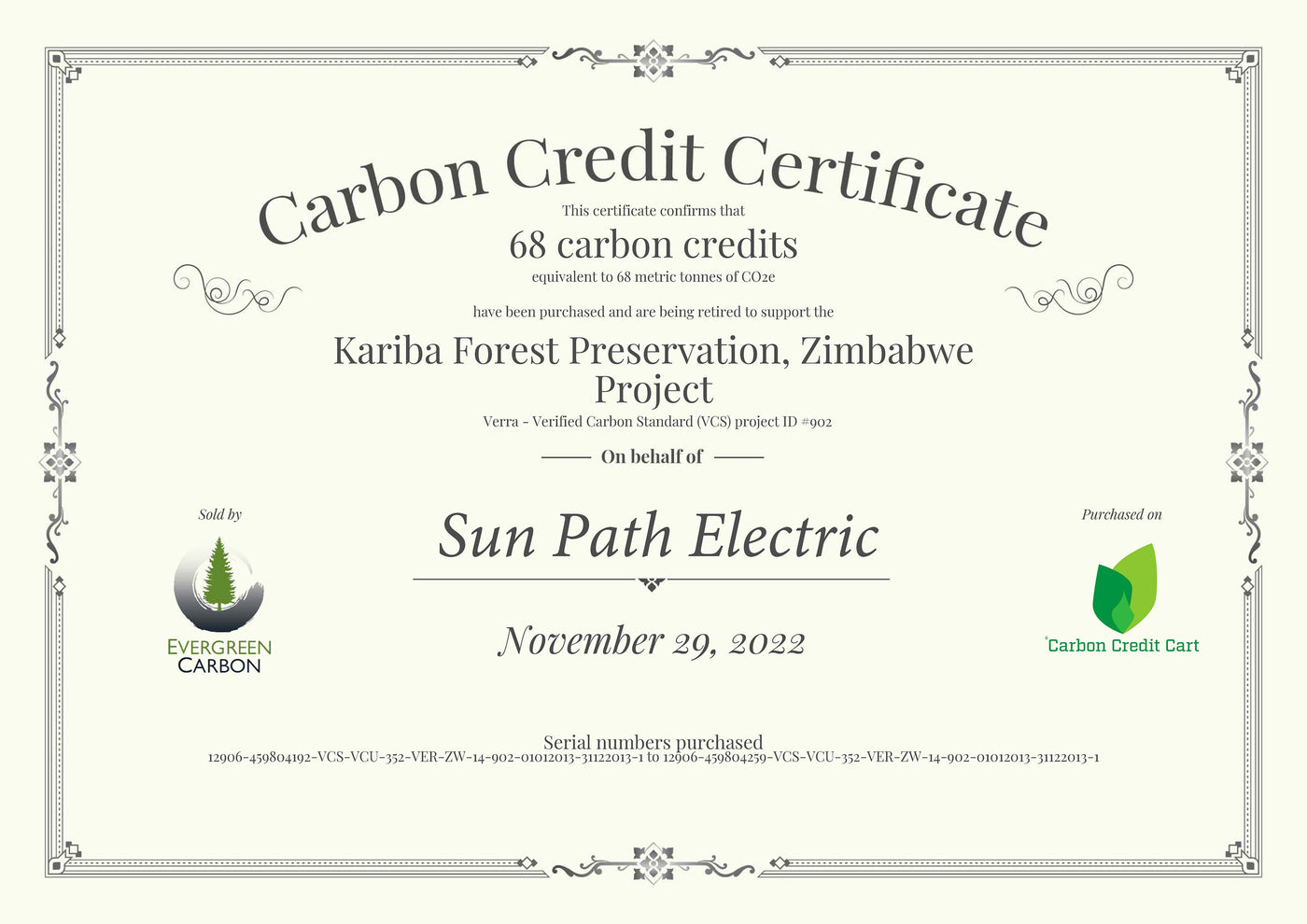
Offsetting our Unavoidable Carbon with Carbon Credit Cart
We are committed to living as lightly as we can as we go about our daily work and family business. We are grateful that there are now resources available to help us be carbon-free. We try to reduce the amount of climate-changing greenhouse gases we put into the environment by driving electric vehicles when we can, reducing our air travel and, of course, by powering our home and business by the sun, but in the course of living our lives and doing business, we still have an impact. Thankfully, we were able to track our carbon footprint by consulting with Evergreen Carbon and, now, we are able to easily offset our carbon emissions each year through the services of Carbon Credit Cart.- Sun Path Electric
- Tags: Carbon neutral Carbon offsets lower carbon footprint Solar company is carbon neutral
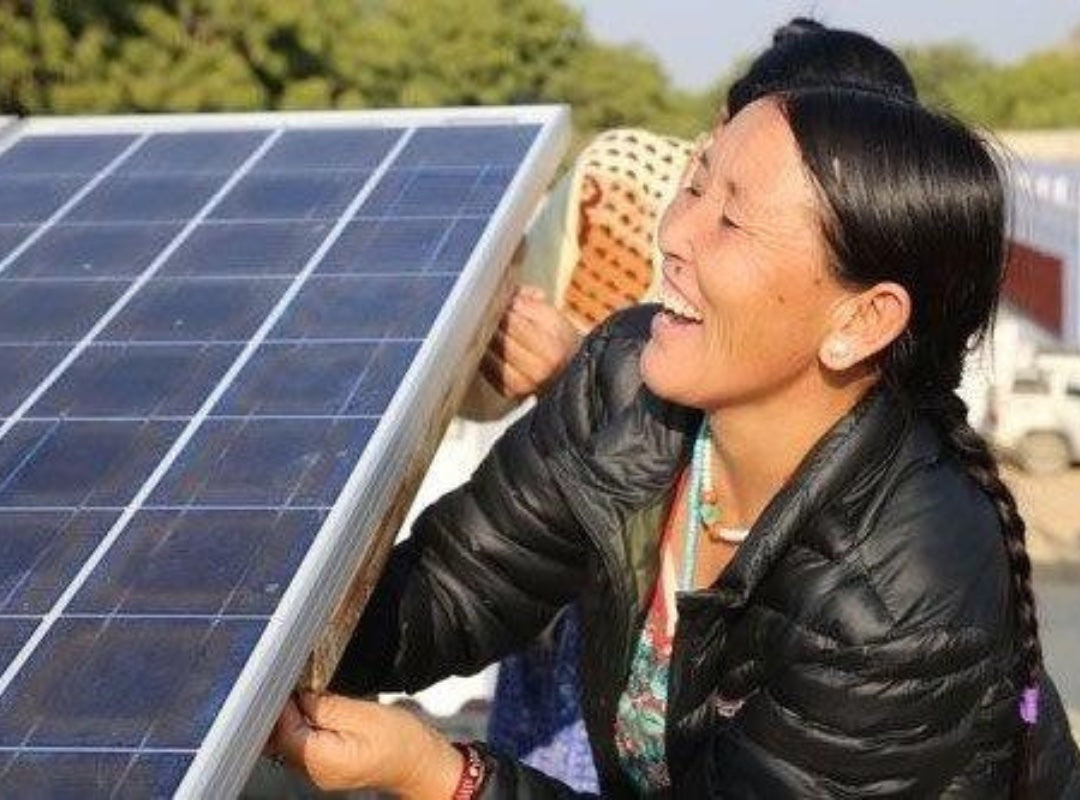
Barefoot College Empowers Women Around the Globe
At Sun Path Electric, we are proud to donate a portion of the proceeds from each sale to support the work of Barefoot College. Recently, we were able to make a donation of $3,000 to support the empowering skill-building work of this phenomenal organization.
We are so pleased to share that on December 12th, 2022 Barefoot College received a Presidential Medal for their work training women to install solar in Guatemala. This work is changing lives as it teaches skills that fight climate change.
The mission of Barefoot College's solar and other programs is to ensure that every woman and girl has the skills and knowledge she needs to be a catalyst for change to the benefit of herself, her family, and her entire community. They achieve this by making vocational and educational opportunities accessible to women and girls from the most marginalized communities around the world. By training women to become Solar Engineers, even if they are illiterate or have no formal education, rural resilience is forged by each village at a time.
To date, their solar program has trained 2,200 women to be solar engineers in 93 countries around the world installing 18, 047 solar home lighting systems.
Click here to learn more about the world-changing work of the Barefoot College International.
- Sun Path Electric
- Tags: Barefoot college Seattle solar Seattle Solar home Seattle Solar Installer

Eco Kitchen Tips - Privanka Nalk - Washington Post


I know this may come as a shock, but I spend most of my time in the kitchen. And I use a ton of kitchen appliances ― blenders, mixers, air fryers ― you name it, I probably have it. But since living on my own, I’ve always had my parents’ voices echoing in my head ― “Turn the light off if you’re not in your room,” “Don’t keep the hair dryer plugged in,” and so on.
When my parents were growing up in India, they were conscious of their energy consumption because ― like many countries outside of the United States ― central heat and air weren’t readily available and the electricity would frequently go out. My parents’ voices and my international experiences have encouraged me to further research how our daily choices about energy use make an impact on the environment.
In 2020, the average annual electricity consumption for U.S. households was 10,715 kilowatt hours (kWh), an average of about 893 kWh per month. Residential energy consumption amounts to over 20 percent of total U.S. energy consumption. In layman’s terms, 1 kWh is the amount of energy an appliance or machine needs to run for one hour.
As consumers, why should we be concerned? According to the Environmental Protection Agency, nearly all parts of the electricity system in the United States affect the environment, creating greenhouse gas emissions, air pollutants, water pollutants, wasted water, solid waste and hazardous waste. All of those things detrimentally affect plants, animals and ecosystems.
Here are tips to reduce energy consumption in your kitchen:

Unplug energy vampires
Kitchen appliances ― and appliances anywhere in your home ― that are plugged in but aren’t being regularly used are using up energy. Some common kitchen counter vampires include your toaster, air fryer, coffee maker, electric kettle, stand mixer, blenders, food processors, juicers and rice cookers. Together, they can account for up to 20 percent of energy bills. Keep them unplugged when not in use and make long-term changes where possible. For instance, I use a stovetop Italian Moka pot to make coffee instead of an electric coffee maker. When I travel, I unplug everything in my home before leaving.
Set your fridge and freezer to the right temp
Not setting your refrigerator to the right temperature can lead to your fridge and freezer over-consuming energy and working in overdrive. Best practices include setting your fridge to 35-38 degrees Fahrenheit, not leaving the doors open for long periods of time and placing the fridge/freezer in a cool, dry place (away from the stove or another direct heat source). Additionally, even the slightest bit of dust on fridge coils can reduce the energy efficiency, so cleaning them regularly will improve efficiency.
Use your cooktop efficiently
We don’t always have a say in what kind of cooktop we get in our homes. But there are still ways we can use our cooktops efficiently ― consider adding a lid to boil water quicker, boiling water in a teapot for tea and coffee (versus an electric kettle), and cooking items on the stovetop that may normally be made in ovens. For example, make eggplant parmigiana in a skillet on the stovetop instead of baking it in the oven. Regulate the flame when cooking on a gas stove ― a higher flame means more gas use. The same applies for electric cooktops ― generally, a mid-heat setting is sufficient versus the highest setting.
Power down an electric cooktop a few moments before your dish is complete ― this will allow the cooktop to cool down sooner and not prolong the use of energy. Similarly, for induction cooktops, which are the most energy efficient option, make sure to align the size of your pan with the size of the heating element on the stove to not overuse electricity when cooking or prolong the heating process.
Don’t overuse the oven
Ovens need energy to heat up and to cook. Some things to consider are a self-cleaning oven (they’re better insulated and more energy efficient) and using the convection baking setting on your oven (it uses 20 percent less energy). Here are some additional tips on how to efficiently use your convection oven.
And two things to consider before jumping to preheat your oven: If the amount you’re making is small, can you use your toaster oven instead? A toaster oven uses one-third to one-half less energy than a conventional electric oven. And depending on what you’re using the oven for, you may not actually need to preheat it. When roasting veggies, for example, you can throw them in as soon as you turn on the oven. (Other items, like cakes, do need a fully preheated oven of course.)
Limit your dishwasher usage
Consider running your dishwasher only when the machine is full. If you’re in the position to, you can look into purchasing an updated energy efficient dishwasher, which could use less than a quarter of the energy that hand-washing dishes would use (provided that scraps are simply scraped off dishes, not rinsed beforehand).
- Sun Path Electric
- Tags: energy efficiency
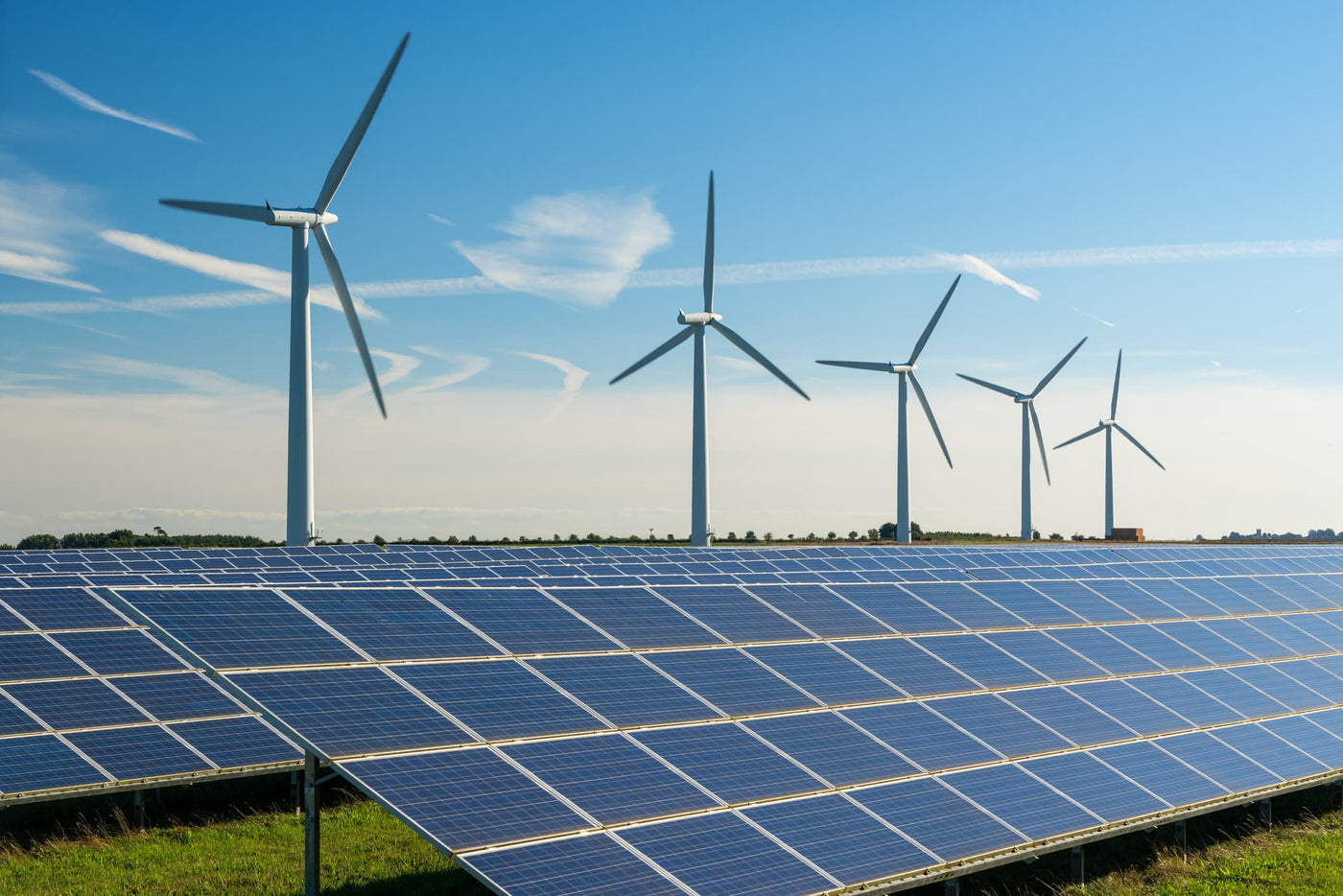
Summary of Senate Inflation Reduction Act as of 8-8-22
As of August 08, 2022, the Inflation Reduction Act (IRA) has passed in the Senate but is still awaiting passage in the House of Representatives and then must be signed by the president. The summary below reflects what is in the most recent available draft of the legislation. This legislation contains the most significant investment in resources and technologies to combat the impacts and advancements of climate change our nation has made to-date. The impact of this investment could be transformative for our industry, country, and dare we say, the world. Please read here for details.- Sun Path Electric
